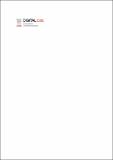Por favor, use este identificador para citar o enlazar a este item:
http://hdl.handle.net/10261/45874COMPARTIR / EXPORTAR:
 SHARE
BASE SHARE
BASE
|
|
| Visualizar otros formatos: MARC | Dublin Core | RDF | ORE | MODS | METS | DIDL | DATACITE | |

| Título: | Simulating the effects of weed spatial pattern and resolution of mapping and spraying on economics of site-specific management |
Autor: | Barroso, J. CSIC; Fernández-Quintanilla, César CSIC ORCID; Maxwell, B. D.; Rew, L. J. | Palabras clave: | Avenia sterilis Barley Weed patches Patch spraying Spatial structure Mapping and spraying resolution |
Fecha de publicación: | 2004 | Editor: | Wiley-Blackwell | Citación: | Weed Research 44: 460-468 (2004) | Resumen: | The economic benefits of using site-specific weed management (SSWM) are related to the proportion of the field that is weed-infested, the number of weed patches and the spatial resolution of sampling and spraying technologies. In this paper we simulate different combinations of these factors using parameter values obtained for Avena sterilis ssp. ludoviciana growing in Spanish winter barley crops. The profitability of SSWM systems increased as the proportion of the field infested by this weed decreased and when patch distribution was more concentrated. Under most of the conditions tested, positive net returns for SSWM were obtained when the weed-infested area was smaller than 30%. The highest net return occurred using a 12 m · 12 m mapping and spraying resolution. The critical parameter that determined the economic viability of patch mapping and spraying resolution was the technology costs. The site specific strategy was economically superior to the standard strategy (overall herbicide application) in most cases. However, the differential between the two strategies decreased when the number of patches and the resolution of mapping and spraying increased, such that the highest net returns were obtained with a single patch covering 14% of the field and using a 12-m mapping and spraying resolution; whereas the worst net returns were obtained for all patch numbers when 64% of the field was infested and a 3-m mapping and spraying resolution was used. | Descripción: | 9 páginas, ilustraciones y tablas estadísticas. | URI: | http://hdl.handle.net/10261/45874 | ISSN: | 0043-1737 |
| Aparece en las colecciones: | (ICA) Artículos |
Ficheros en este ítem:
| Fichero | Descripción | Tamaño | Formato | |
|---|---|---|---|---|
| restringido.pdf | 21,67 kB | Adobe PDF |  Visualizar/Abrir |
CORE Recommender
Page view(s)
271
checked on 27-abr-2024
Download(s)
257
checked on 27-abr-2024
Google ScholarTM
Check
NOTA: Los ítems de Digital.CSIC están protegidos por copyright, con todos los derechos reservados, a menos que se indique lo contrario.
